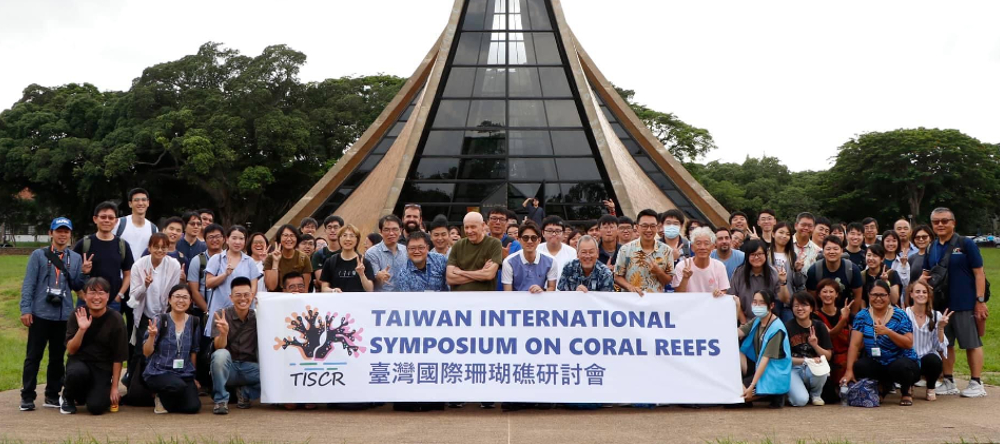- Event
- PICRC staff
PICRC visits Taiwan to enhance global collaboration and attend Taiwan International Symposium on Coral Reefs
The Palau International Coral Reef Center (PICRC) continues to expand its international network through a recent visit by Interim CEO Caryn Lkong Koshiba and Researcher Dr. Piera Biondi to Taiwan. From June 26-29, Koshiba and Biondi strengthened global collaborations and attended the Taiwan International Symposium on Coral Reefs (TISCR), sponsored by Taiwan’s National Academy of Marine Research (NAMR) and Biodiversity Research Center Academia Sinica (BRCAS).
TISCR, held at Tunghai University in Taichung on June 27 and 28, provided a significant platform for PICRC. Koshiba delivered opening remarks, highlighting PICRC’s ongoing research and inviting international scientists to explore collaborative opportunities. Dr. Biondi presented her research on coral recovery after typhoons, highlighting a study conducted with Dr. Liam Lachs from Newcastle University. The symposium enabled valuable interactions with researchers, including Dr. Tang, and sparked discussions on potential joint projects.
Before the symposium, Koshiba and Biondi visited several key institutions to explore opportunities for enhancing PICRC’s research and capacity-building efforts. On June 25, they visited NAMR’s headquarters in Kaohsiung, where Dr. Biondi presented PICRC’s research, and they met with the NAMR President to discuss potential support in terms of technology and training.
Following their visit to NAMR, the PICRC team toured marine science laboratories at Sun Yat-Sen University. They met with the Director of Marine Science and other scientists to explore the possibility of sending samples from Palau for testing in advanced laboratories not currently available at PICRC.
Reflecting on the trip, Koshiba shared, “This visit was incredibly productive in building connections for future collaborations with marine institutions and universities. We explored potential projects involving environmental DNA, coral restoration, sponge studies, and more. It was also a valuable learning experience, giving us insights into cutting-edge studies and introducing us to new researchers from around the world. I would like to express my gratitude to NAMR and BRCAS for their support and looking forward to more collaboration in the future.”


